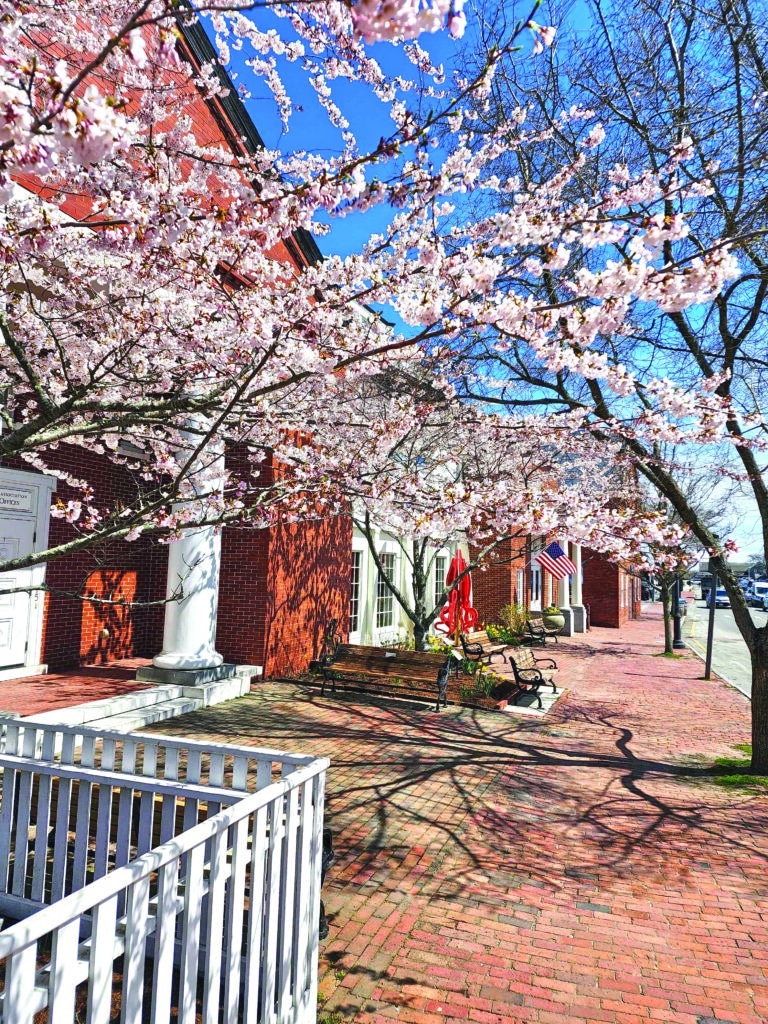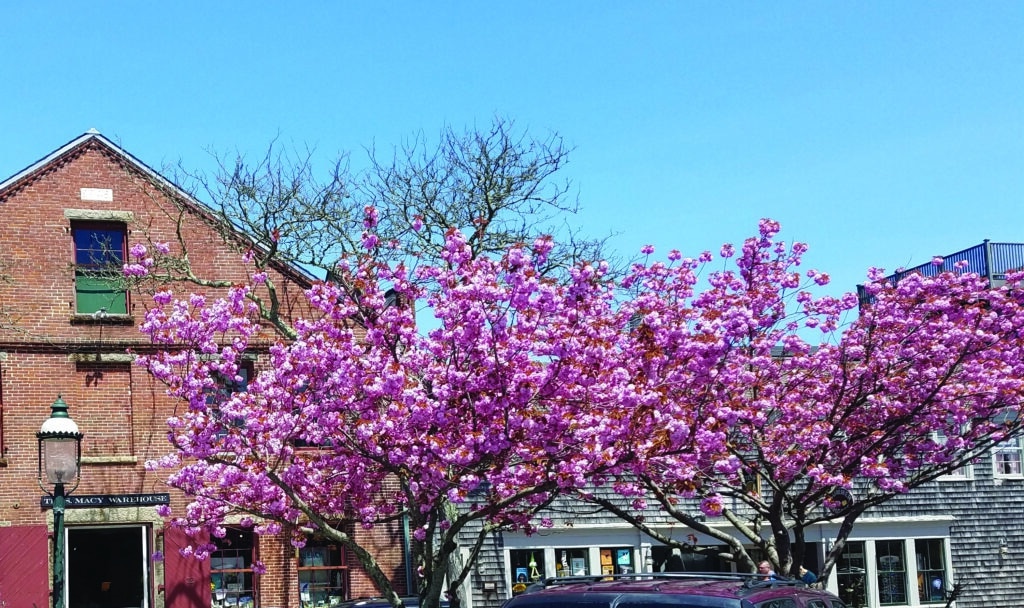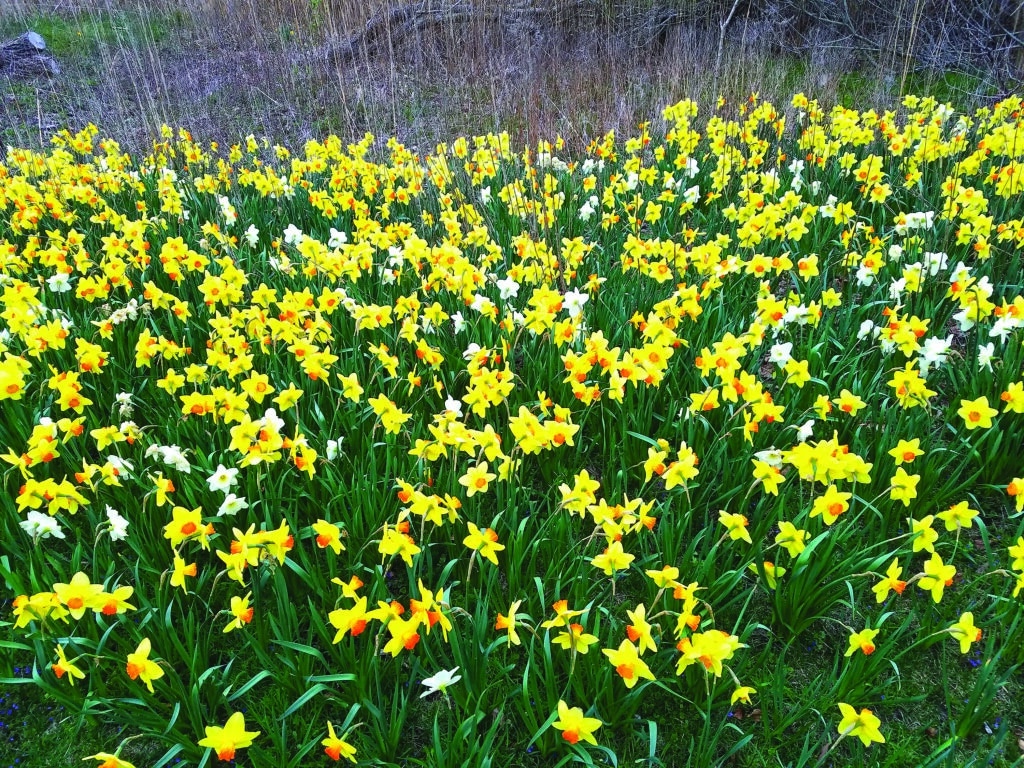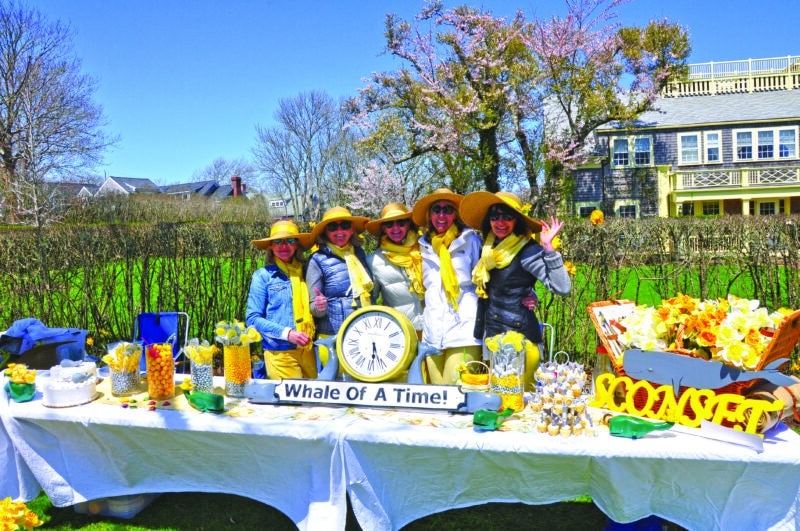by Dr. Sarah Treanor Bois
Director of Research & Education at the Linda Loring Nature Foundation
When the Nantucket Daffodil Festival began in 1975, organizers were looking for a way to celebrate spring and bring some life into the island’s shoulder seasons. That first festival was held on May 2nd. In 1980, the Nantucket Daffodil Festival moved to the last weekend in April, where it has remained ever since.
What better symbol of the resiliency of the Nantucket people after a long, cold winter, than a daffodil blossom? Beautiful and delicate on the outside, it can weather any sudden storm Mother Nature can dish out. Daffodils are resilient enough that as temperatures warm with global climate change, they change too, many varieties blooming earlier than ever before.
Research from around the world has shown that many spring blossoms are experiencing peak flowering dates earlier on average than historic norms. The flowering times are also somewhat unpredictable given the erratic nature of warming and increased storm events. These factors combined make predicting peak blossom of your favorite flowering plant more difficult. And if predicting peak flowering determines when to hold a particular flower festival, then there’s a lot riding on accuracy. Who wants to show up to a daffodil festival when the lilacs are blooming? Flower festivals around the globe are responding in unique ways.
The oldest known flower festivals occur in Japan, where cherry blossoms are celebrated as a symbol of spring, but are also culturally significant. The tradition of cherry blossom viewing, known as Hanami, goes back thousands of years. Records of peak cherry blossom timing began around AD 800. These records show that after being a static calendar fixture for centuries, Hanami started to change at the beginning of the Industrial Revolution. According to researchers at Osaka University, last year cherry blossoms peaked earlier than they had for more than 800 years: about 2 weeks earlier!

In the US, our cherry blossoms are also feeling the effects of earlier springtime temperatures. In 1912, Mayor Yukio Ozaki of Tokyo gave the city of Washington, DC 3,000 cherry trees to symbolize the bond between the United States and Japan. The first National Cherry Blossom Festival was held in 1927. Since then, thousands of people travel every year to see the trees in full bloom. The National Park Service, which has been tracking cherry blossom bloom time since 1927, uses these data to predict peak bloom period. This year, the predicted peak bloom for the cherry blossoms in DC was March 22-25. Since the festival began, peak bloom for the DC cherry blossoms has shifted earlier by an average of five days, but sometimes as much as 10 days earlier in any given year. In addition to the blossom forecast, organizers have scheduled the festival to go from March 20 – April 17, 2022 to ensure blossoms during that window. Another way DC has “hedged their bets”? More variety. The majority of the cherry blossom trees are of the Yoshino variety, the species predictions are based upon. But another species, the Kwanzan, usually blooms two weeks after the Yoshino trees, giving visitors a second chance to catch the blossoms.
Other flowering festivals from around the country were similarly started to celebrate spring and often local cultural heritage. Holland Michigan has a tulip festival which began in 1929 to celebrate the heritage of the town’s Dutch settlers. The festival is held in mid-May over two weeks to ensure that bloom time happens sometime during the festival. There’s even a Tulip Tracker report of how the blooms are progressing. The town webpage features a live feed of Centennial Park, which helps people keep an eye out for early bloomers.
Other flower festivals celebrate lilacs (Rochester, NY and Arnold Arboretum, MA), roses (Portland, OR), azaleas (Wilmington, NC), and bluebonnets (Texas). Some organizers have moved festival dates to coincide with earlier bloom times. Others have extended the celebration to ensure that blooms happen during the festivities and adding other events to their schedules.

In Lancaster California, the Poppy Festival celebrates the state flower; the California Poppy. Held the same weekend as our own Daffodil Festival (April 22 – 24 this year), the festivities includes food, music, vendors, live animals, and more. When nature “cooperates,” massive fields of orange poppies delight guests at the Antelope Valley Poppy Reserve just outside of town. Being a desert grassland plant, poppy blooms are dependent on winter precipitation; another factor becoming more variable with climate change. A live “poppy cam” of the primary poppy fields and regular bloom updates by park officials let visitors know what to expect. This year, bloom is already past peak: limited winter rainfall shortened the bloom period. The party scheduled for late April continues regardless.
And what about daffodils? Another daffodil festival, this one in Thriplow Village in England, was started in 1969 in an effort to raise funds for the local church. It’s been so successful it has continued as a spring celebration which raises money for local charities. Similar to Nantucket’s festival, it’s held during a weekend in April originally selected during peak bloom of the daffodils. That first daffodil festival was held the last weekend of April, just like our own. Today, however, the Thriplow festival has been moved to coincide with actual peak bloom. In the decades since it started, the festival has slowly moved earlier and was held this year the weekend of March 19 and 20.
So, how are our Nantucket daffodils faring? For the past decade or so, people have noted the blooms along Milestone Road often open well before Daffodil Festival. Many gardeners and daffodil enthusiasts have begun planting late-blooming varieties of daffodil bulbs to ensure blossoms come festival time. Research has shown that diversity often increases resiliency. The same can be true for our daffs: plant enough varieties and something will be bloom during the celebrations.

As we continue to experience the effects of global climate change with springtime temperatures arriving earlier than historic norms, will the Nantucket Chamber move Daffodil Weekend earlier in April to maximize blooms? Will they further extend the festival to stretch two weekends in April to hedge their blossom- bets? Or will we find a new flower to worship that coincides with the end of April? Lilacs may be coming earlier as well. Or perhaps we will start celebrating native species! Nantucket Shadbush should be blooming soon and that is definitely a reason to celebrate.



